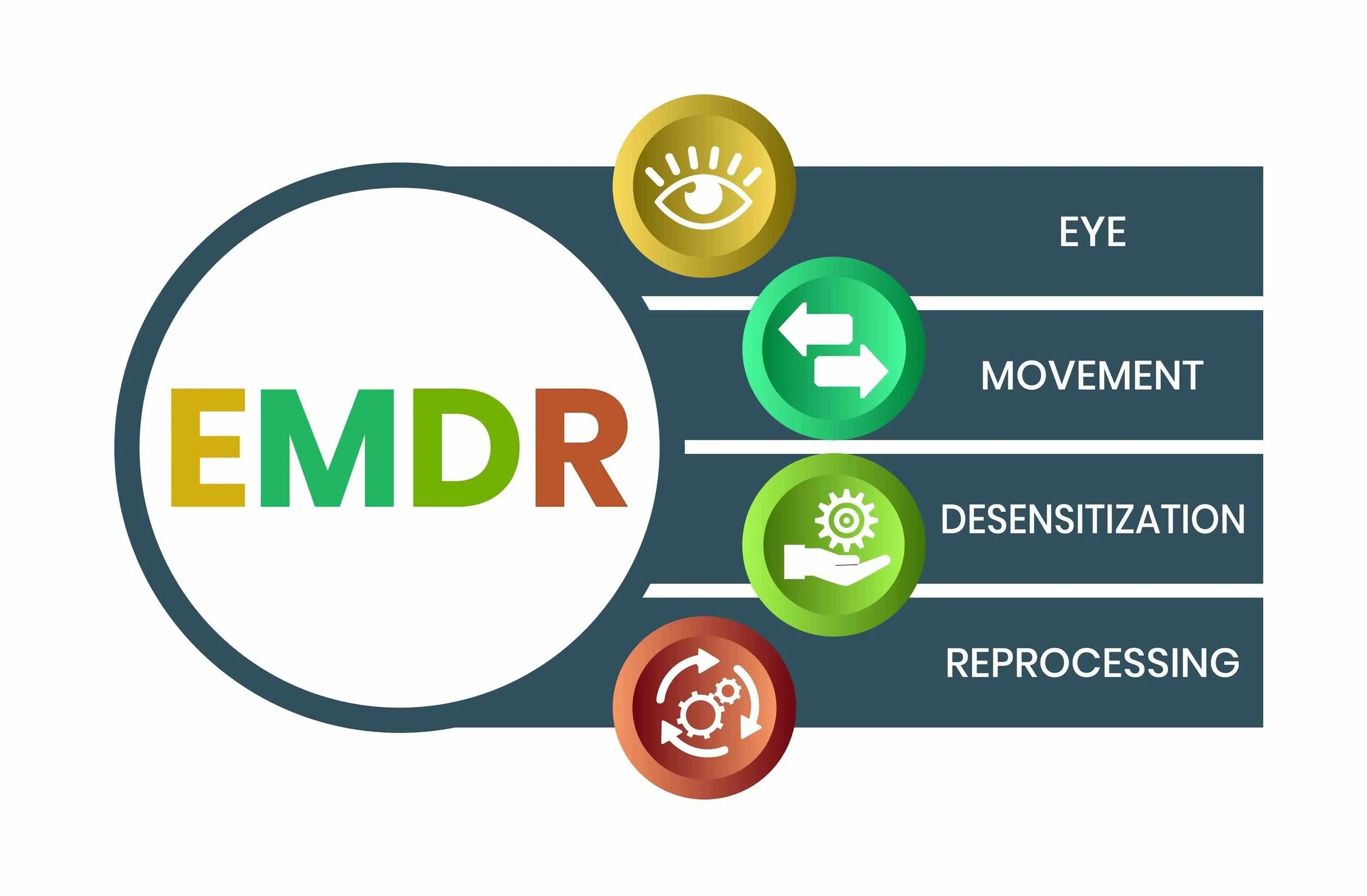EMDR Therapy for Men: How It Works and Why It Matters
If you are struggling with PTSD, anxiety, depression, or simply feel stuck, EMDR therapy may be worth exploring.
When most people think of therapy, they imagine sitting across from a counselor and talking through life’s challenges. That traditional model, commonly called “talk therapy”, has been around for decades, and can be effective. But not every mental health challenge can be solved by conversation alone. Sometimes, experiences get “stuck” in the nervous system in ways that talking cannot fully reach. That is where Eye Movement Desensitization and Reprocessing (EMDR) therapy comes in.
Originally developed to treat trauma, EMDR has since expanded into a wide range of mental health applications including anxiety, depression, performance issues, and stress management. For men in particular, who are often less likely to seek counseling and may find it difficult to express painful emotions, EMDR offers a unique and practical path to healing.
What Is EMDR Therapy?
EMDR therapy (Eye Movement Desensitization and Reprocessing) was discovered serendipitously, and then developed in the late 1980s by psychologist Francine Shapiro. She noticed that certain eye movements reduced the intensity of disturbing thoughts, and from there, she created a structured therapeutic approach.
The idea is simple but powerful. When we experience trauma or overwhelming stress, the brain does not always “file away” those memories properly. Instead of being stored as past events, they remain raw and easily triggered. EMDR helps the brain reprocess those memories so they no longer feel like present-day threats.
Why EMDR Therapy Appeals to Men
Men often grow up with cultural messages like “man up,” “shake it off,” or “don’t dwell on the past.” The result is that many guys bury emotions instead of processing them. Unfortunately, unresolved stress does not just disappear. It often shows up later as irritability, anxiety, sleep problems, health issues, or struggles in relationships.
Here is why EMDR can be especially helpful for men:
Less talking, more doing: EMDR does not require you to rehash every painful detail. In some cases, you do not even have to describe the memory out loud.
Practical structure: The step-by-step process feels more like working through the issue than simply talking about it.
Efficient: Results may be achieved in fewer sessions compared to traditional therapy.
Mind and body benefits: Reprocessing old stress often leads to better sleep, less tension, and improved focus.
Mental Health Conditions EMDR Can Help
Although EMDR therapy is best known for trauma treatment, research shows it can be effective for many issues men face.
Post-Traumatic Stress Disorder (PTSD)
Whether from combat, accidents, first responder work, or childhood experiences, trauma can leave lasting scars. EMDR therapy is one of the most effective treatments for PTSD. It helps men remember events without reliving them.
Anxiety and Panic Attacks
Anxiety often develops when the brain gets stuck in fight-or-flight mode. EMDR helps identify and reprocess the root causes, which reduces automatic fear responses and restores calm.
Depression
For many men, depression is tied to unresolved loss, shame, or failure. EMDR can help shift negative mental loops such as “I am not good enough” or “I always screw up” into healthier and more balanced beliefs.
Addictions and Compulsive Behaviors
Substances, porn, gambling, and even overwork often serve as ways to numb pain. EMDR targets the experiences that fuel those behaviors, helping men develop healthier coping strategies.
Grief and Loss
Loss, whether of a loved one, a relationship, or a career, can leave men stuck in unprocessed grief. EMDR supports healthy grieving and allows for forward movement.
Performance Anxiety
Athletes, executives, and high achievers are increasingly using EMDR to unlock peak performance. By targeting self-doubt and past failures, men can free themselves from mental roadblocks and focus better under pressure.
What to Expect in an EMDR Session
If you have never tried EMDR therapy, you might wonder what actually happens. Here is a typical flow:
Preparation: You and your therapist identify the target memories or themes and develop grounding techniques.
Targeting: You bring up the memory and notice the thoughts, emotions, and physical sensations it stirs.
Bilateral Stimulation: Your therapist guides you through eye movements, tapping, or alternating sounds to activate both brain hemispheres.
Reprocessing: Over repeated sets, the brain begins to digest the memory, and the emotional intensity decreases.
Closure: Each session ends with grounding exercises so you leave feeling more settled.
Many clients report that memories lose their emotional charge. They become something that happened in the past rather than a current source of pain.
Research supports EMDR as a proven treatment, especially for trauma and PTSD. Organizations such as the American Psychological Association, the World Health Organization, and the Department of Veterans Affairs recognize it.
Neuroscience suggests that EMDR works by helping the brain move memories from short-term, emotionally charged storage into long-term, integrated memory. It is like finally letting your brain hit “save and file” instead of leaving the document open and flashing on your desktop.
EMDR Therapy: A Path Toward Healing
For men, therapy can sometimes feel like admitting weakness. In reality, choosing to face what has been weighing you down is one of the strongest moves you can make. EMDR therapy is not about overanalyzing. It is about actively rewiring the way your brain responds to the past so you can fully live in the present.
If you are struggling with PTSD, anxiety, depression, or simply feel stuck, EMDR therapy may be worth exploring. It is an evidence-based tool for healing, resilience, and growth that can help men not just survive, but thrive.

